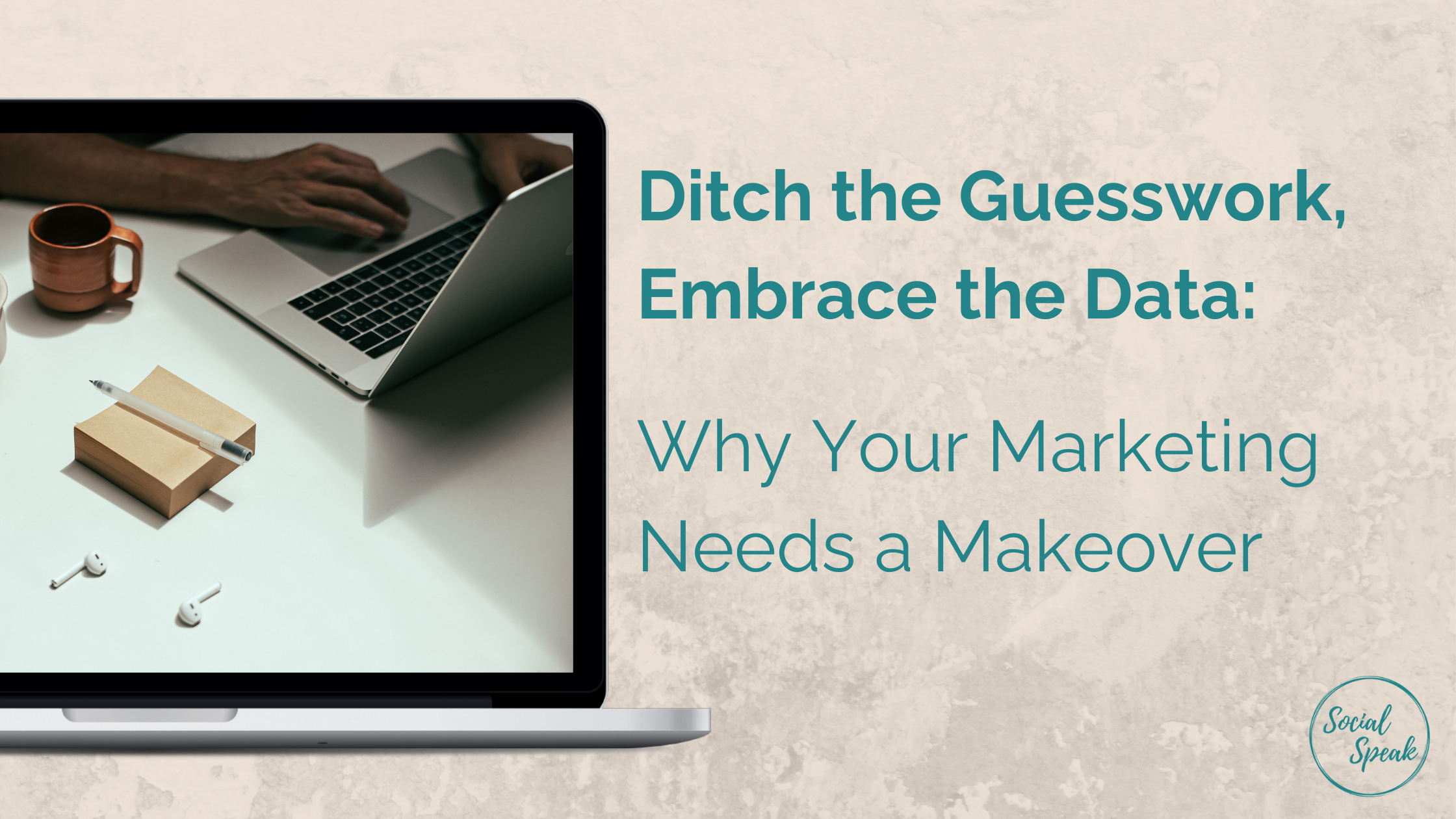 As marketers, creating compelling content through social media is the key to our internet success. But, without the ability to reach a large audience and attract followers, our content can be easily lost and forgotten. The world of social media is constantly changing, and staying on top of the latest tips and tricks to help make sure you stay present is crucial to your success. For many businesses, Twitter is the go-to platform for attracting customers, promoting products and services, and making sure people are actually noticing their content. Here are some useful hacks to make sure your Twitter posts are reaching the right people and attracting more customers.
As marketers, creating compelling content through social media is the key to our internet success. But, without the ability to reach a large audience and attract followers, our content can be easily lost and forgotten. The world of social media is constantly changing, and staying on top of the latest tips and tricks to help make sure you stay present is crucial to your success. For many businesses, Twitter is the go-to platform for attracting customers, promoting products and services, and making sure people are actually noticing their content. Here are some useful hacks to make sure your Twitter posts are reaching the right people and attracting more customers.
Pinning Posts:
Pinning your Twitter posts can be used to highlight AND pin your key tweet. This is a great way to make sure your richest content has a longer lifecycle and is visible to newcomers. How do you pin a Twitter post? First, find a tweet you want to pin on your Twitter profile. This could be a post that received the most favorites, had the most comments, a retweet from someone who mentioned you etc. From there, click the three-dot icon that appears at the bottom of the tweet, next to the favorites account. From the drop-down menu, select “Pin to your profile page.” This can also be done through your mobile device! When you refresh your page, your pinned tweet should appear at the top of your most recent tweets.
It’s important to note that pinning the tweet does not add the tweet back to your follower’s newsfeed. Only people who look through your profile directly will see the pinned tweets. Pinning your tweets is affective because it helps direct newcomers to the content you feel grabbed the most attention. This leads to even more retweets and favorites with new followers, and overall more exposure to your Twitter profile.
Twitter Cards:
Major brands have been jump-starting their Twitter posts by using Twitter Cards. A Twitter Card allows you to decide how you want your content to be displayed within tweets and helps you stand out amongst the clutter. This leads to increased likelihood that customers will click on and retweet your posts. There are 7 different types of Twitter Cards that help your posts stand out and drive more traffic to your website.
One of the greatest Twitter Cards for marketers is the Twitter Summary Card. This allows marketers to customize the content description that appears in the summary before it’s posted. Whether you want to share your opinion, provide a short overview, or ask a question, the Summary Card makes it easy to eliminate the sometimes off-message default lines of text that appear with a particular link.
How To Enable Twitter Cards for Your Site:
- Using the Yoast WordPress SEO plugin, enable Twitter card meta-data from the Social>Twitter menu.
- Visit the Twitter Card Validator and enter the URL for your blog.
- Once your site validates, request that your url is added to the beta program. Twitter will likely have you validated in just a few days.
Organize Weekly Twitter Chats:
Twitter chats are directly tied to specific and original hashtags through which tweets are organized and tracked and are great for your overall Twitter marketing strategy. To have a successful Twitter chat, set a date and time when most of your followers will be online, then choose a hashtag. Keep your hashtag short and concise, but also memorable and unique. Before starting your Twitter chat, make sure you have staff to keep things running smoothly and to prevent your hashtag from being hijacked. There are various tools to help organize your chats such as Twubs, Nurph, and ChatSalad.

5 Ways to Improve Your Twitter Marketing Results
1: Turn a Pinned Tweet Into a Feature Box
The Feature Box is an email form you place at the top of your homepage, which offers your website visitors a freebie in exchange for signing up for your email list.You can add a similar feature to your Twitter profile page by combining two of Twitter’s native features: a lead generation card and a pinned tweet. Simply create a Lead Generation Card that includes an incentive for people to opt in. Offer regular email updates, a special freebie or a subscribers-only discount. Pin the tweet to the top of your Twitter profile and you’re all set.
2: Communicate Less and Tweet More Links
A recent study by Dan Zarrella looked at the “reply rates” of about 130,000 random Twitter users and discovered that highly followed accounts tend to converse less. Keep in mind, the study results don’t suggest that Twitter conversations have a negative effect on your following, just that conversations aren’t what motivate people to follow you on Twitter. According to another study by Dan Zarrella, the way to get more followers is to invest more time tweeting relevant links to your followers, rather than communicating directly with them.
3: Ask Twitter Influencers for Help
According to BuzzSumo who recently studied the share counts of more than 100 million articles, when influencers share your content, the reach increases substantially. If one influencer shares a piece of content, it will get 38.8% more social shares. Three influencers double the social shares and five influencers quadruple them. It’s crucial to network with influencers and develop relationships with them. Then, when you have an important piece of content you’d like to get seen, you can ask the influencers you know to share it.
4: Use Twitter’s Recommend Feature
Recommend is a new feature of Twitter’s tweet button that many people don’t pay attention to. After a visitor tweets an article from your blog, the window recommends they follow you on Twitter, if they don’t follow you already. This is an excellent way to grow your Twitter account, since people who just tweeted your article are likely to want to follow you. Look at the code of your tweet button and make sure the recommend field contains your Twitter username. To double-check you’ve set up the feature correctly, ask a friend to unfollow you on Twitter and then tweet an article from your blog. If the recommend field contains your Twitter username, you’re all set.
5: Repeat Article Tweets
According to a study by Wisemetrics, the second tweet of an article gets as much as 86% of the performance as the first tweet. Clearly the performance will fade with each new tweet, but considering your followers are probably in different time zones, you still need to tweet your most valuable content more than once. Your new followers will appreciate it, since the content will be new for them.

And finally! Here are some Tips for Writing Great Tweets!
Composing the perfect tweet isn’t easy. With only 140 characters at your disposal plus million of users from all over the world generating more than 500 million tweets a day, it can be extremely difficult to get through the noise.
While there is no such thing as the perfect tweet, there are some guidelines to follow for writing one that will capture the attention of people.
Tips for writing great tweets:
Get to the point
According to studies, tweets with less than 100 characters get 18% more engagement. When writing tweets, make sure you keep it short, concise, and interesting. Get to the point. Make every character count. If you have a longer message to convey, we suggest that you include a link to a blog post.
Start interacting
If you want to reach more people, make sure that you interact with them. This can be done in many forms – by asking a question, retweeting other’s posts, responding to other users, following interesting people, engaging in conversations or sharing valuable information.
Command action
Recent studies show that tweets that command action receive better engagement and retweets. When writing tweets, make sure that you include a call to action. Whether you want people to follow you in other social networks, retweet your posts or enter your contest, you need to be clear about what you want people to do.
Use hashtags
A hashtag provides a way for new followers to find you. It is how you identify your content as relevant to a certain field or group of people. Make sure you include hashtags in all your tweets, but don’t overuse it. You can use an existing hashtag or create your own.
Proofread
As a business professional, you want to make sure that your tweets are free from grammar and spelling errors. Your tweets will only be composed of 1 to 3 sentences, so make sure that you get them right. Avoid slang and abbreviations.












 Before you begin to post information to social media channels, your business needs to define its specific goals that it is looking to achieve by leveraging social media. To effectively manage a social media campaign for your business, you must first be able to define how you are going to measure results. A goal of “increasing website visitors who view more than 3 pages” is an excellent goal.
Before you begin to post information to social media channels, your business needs to define its specific goals that it is looking to achieve by leveraging social media. To effectively manage a social media campaign for your business, you must first be able to define how you are going to measure results. A goal of “increasing website visitors who view more than 3 pages” is an excellent goal.



